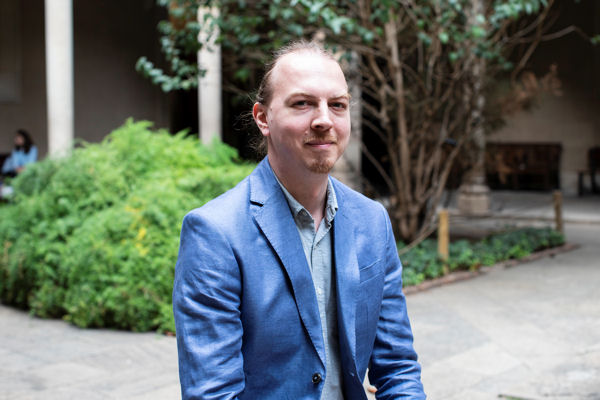Three UB researchers receive grants from the European Research Council

Today, the results of the European Research Councilʼs Starting Grants call have been published. These grants fund projects by researchers with an experience of between two and seven years since they obtained their doctoral degrees. Out of the 15 grants given to Spain, 3 have been given to researchers of the University of Barcelona: Bart Limburg, Carla Marín and Marta Sánchez de la Torre. Therefore, the UB is the institution with the most Starting Grants in this call.

Today, the results of the European Research Councilʼs Starting Grants call have been published. These grants fund projects by researchers with an experience of between two and seven years since they obtained their doctoral degrees. Out of the 15 grants given to Spain, 3 have been given to researchers of the University of Barcelona: Bart Limburg, Carla Marín and Marta Sánchez de la Torre. Therefore, the UB is the institution with the most Starting Grants in this call.
The research of Bart Limburg, tenure-track 1 lecturer at the Department of Inorganic and Organic Chemistry at the Faculty of Chemistry, consists of mimicking natural chemical synapses using purely synthetic components, and it will receive more than 1.6 million euros. Limburg says that the communication between neurons in our brains through such synapses “is the basis of intelligence and our senses”. His project, Synaps, aims to build an artificial system where communication between artificial cells occurs while maintaining chemical isolation between cells. “This would be a big advance in the field, since, to date, it only achieved communication by diffusion of molecules across artificial cell membranes. Instead, I will use light as both an actuator to trigger the sending of a message and a way to monitor the output of the process by the production of a fluorescent signal”, notes Limburg.
The researcher hopes to build artificial synapses to apply them to studies on intelligent communication and expand them into networks resembling an artificial brain, or chemical computer. “These systems might find application in medicine because they can interface with biological tissue, and might be used as smart drug-delivery systems”, concludes.
Carla Marín, tenure-track 1 lecturer at the Department of Quantum Physics and Astrophysics of the Faculty of Physics and researcher at the Institute of Cosmos Sciences (ICCUB), has received more than 1.6 million euros, to do research on the behaviour of quarks, essential particles that make up matter. “The aim of the CLIMB project is to explore very rare b-quark disintegrations — which occur once in 100 million— to much lighter d-quark and two leptons. Due to its suppression, we have no experimental information on these disintegrations, which are very sensitive to the existence of new forces and their nature”, notes Marín, who adds: “With this aim, my team will use unique data from the LHCb experiment, located in the CERNʼs Large Hadron Collider in Geneva, which has billions of b-quarks and will develop new analytical techniques to observe and measure the properties of these elusive disintegrations”.
Once the research ends, they hope to “dramatically change the knowledge on b>d II transitions and see if there is any existing new force of nature that affects its properties”, concludes Marín.
Marta Sánchez de la Torre, Beatriu de Pinós postdoctoral researcher at the Department of History and Archaeology of the Faculty of Geography and History and member of the Institute of Archaeology of the UB, has received 1.5 million euros to develop the SPEGEOCHERT project. "I want to analyse the mobility of hunter-gatherer groups that lived between 35,000 and 11,000 years ago in western Europe and see how they interacted with mountain areas during the last glacial episode", explains the researcher, who adds: "Through one of the most important elements in the archaeological record of prehistoric sites, such as lithic tools, and specifically tools made of flint, and applying an innovative methodology, we will provide new knowledge about the economic and adaptive strategies of different communities of Homo sapiens of the Upper Palaeolithic”.
The aim of the research, says Sánchez de la Torre, is "to determine whether mobility between the two parts of the Pyrenees was only through the ends of the mountain range, or whether there were also secondary routes to cross the Pyrenees through the central part".
In this Starting Grants call, a total of 480 researchers have been selected for a total funding of 636 million euros.
